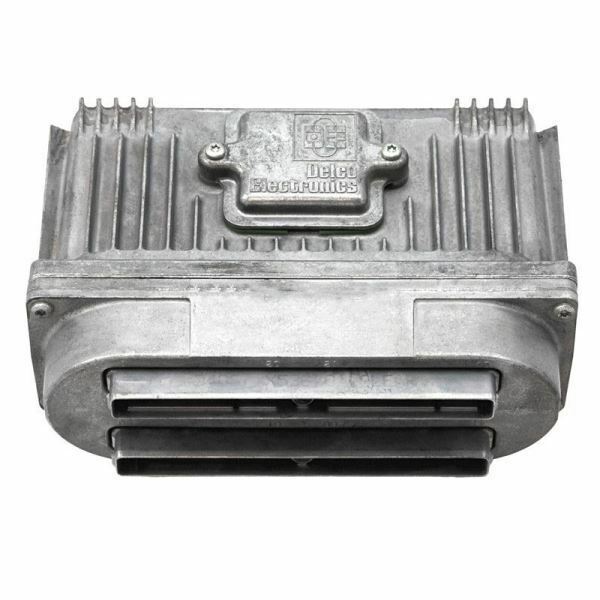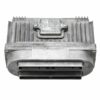Restore Peak Performance to Your 1997 GM Vehicle
If you’re dealing with a frustrating Check Engine Light, poor fuel economy, or unpredictable engine behavior in your 1997 GM car or van, the problem often traces back to a failing Powertrain Control Module (PCM). As a technician with over two decades of experience under the hood, I’ve seen firsthand how a faulty computer can cripple an otherwise reliable vehicle. This isn’t just a part; it’s the central command center for your engine and transmission. This replacement 1997 Eighty Eight PCM is your direct-fit, reliable solution to bring your vehicle back to factory-spec operation.
A Technician’s Notebook: The Intermittent No-Start Nightmare
I remember a 1997 Buick LeSabre that came into my bay with a complaint that stumped two other shops: it would randomly refuse to start. No codes, no clear pattern. After checking all the usual suspects—fuel pump, crank sensor, ignition system—everything tested fine. On a hunch, I tapped the PCM with a screwdriver handle while my assistant cranked the engine, and it fired right up. The culprit was a hairline crack in a solder joint on the main board, a common failure on these older modules due to years of heat cycles. Replacing the PCM with a properly programmed unit like this one solved the problem permanently. It’s a reminder that sometimes the most baffling electrical gremlins live inside the vehicle’s brain.
Why VIN Programming is a Game-Changer
The biggest hurdle when replacing a PCM used to be the expensive trip to the dealership for programming. We’ve eliminated that step. When you purchase this module, we flash it with the latest GM software updates using the unique Vehicle Identification Number (VIN) from your car. This ensures perfect communication between the module and all your vehicle’s systems, from the engine and transmission to the anti-theft system. It arrives at your door ready for installation, saving you time and hundreds of dollars in programming fees.
Common Signs of a Failing PCM
A failing computer can manifest in numerous ways. If your vehicle is experiencing any of the following, a faulty PCM could be the root cause:
- ✔ Persistent Check Engine Light (CEL)
- ✔ Diagnostic Trouble Codes (DTCs) like P0601 (Internal Control Module Memory Check Sum Error)
- ✔ Engine stalling, stumbling, or misfiring
- ✔ Harsh or erratic automatic transmission shifting
- ✔ A sudden, unexplained drop in fuel mileage
- ✔ The vehicle cranks but will not start (no-start condition)
- ✔ Failure to pass an emissions inspection
A Straightforward Guide to Installation
Installing your new 1997 Eighty Eight PCM is a manageable job for a DIYer with basic tools. Follow these steps carefully for a smooth process.
- Safety First: Disconnect the negative terminal from your vehicle’s battery and secure it away from the post to prevent accidental reconnection.
- Locate the PCM: On most of these 1997 GM models, the PCM is located in the engine bay, often inside the air filter housing or mounted to the firewall.
- Disconnect the Module: Carefully unplug the electrical wiring harnesses. These connectors have locking tabs that need to be released. Avoid pulling on the wires themselves.
- Remove the Old PCM: Unbolt the mounting hardware that secures the old computer in place and remove it from the vehicle.
- Install the New PCM: Mount your new, pre-programmed PCM in the same location and secure it with the original hardware. Reconnect the wiring harnesses, ensuring they click securely into place.
- Reconnect the Battery: Reattach the negative battery terminal.
- Perform Security Relearn: Your vehicle’s Passlock/Passkey anti-theft system may need to be relearned. The typical procedure is to turn the key to the ‘ON’ position (without starting) for 10-15 minutes, then turn it ‘OFF’ for 10 seconds. Repeat this cycle three times. On the final cycle, the car should start and run normally.
Verified Vehicle Compatibility
This module is a direct replacement for part numbers 16217058 and 16218070. It is guaranteed to fit the following 1997 models:
- ✔ Oldsmobile Eighty Eight: with 3.8L (6-231) V6 engine (w/o supercharger)
- ✔ Buick LeSabre / Regal / Park Avenue: with 3.8L (6-231) V6 engine (w/o supercharger)
- ✔ Pontiac Bonneville / Grand Prix: with 3.8L (6-231) V6 engine (w/o supercharger)
- ✔ Chevrolet Lumina / Monte Carlo: with 3.1L (6-191) V6 engine
- ✔ Chevrolet Venture: with 3.4L (6-207) V6 engine
- ✔ Oldsmobile Silhouette: with 3.4L (6-207) V6 engine
- ✔ Pontiac Trans Sport: with 3.4L (6-207) V6 engine
- ✔ Buick Century / Skylark: with 3.1L (6-191) V6 engine
- ✔ Oldsmobile Achieva / Cutlass Supreme: with 3.1L (6-191) V6 engine
- ✔ Pontiac Grand Am / Grand Prix: with 3.1L (6-191) V6 engine
Your Reliable Fix is Here
Don’t let a bad computer keep your car off the road. This pre-programmed 1997 Eighty Eight PCM is the most efficient and cost-effective way to solve complex electronic issues and restore the smooth, reliable operation you depend on. Just provide your VIN at checkout, and we’ll handle the rest.
Frequently Asked Questions
What exactly is VIN programming?
VIN programming is the process of loading your vehicle’s specific software and calibrations onto the PCM. This includes information about your engine, transmission, and factory options. It ensures the new computer works seamlessly with your car, just like the original one did.
Do I need any special tools for the installation?
No special tools are required. Basic hand tools like a socket set and screwdrivers are all you should need to physically swap the module. The only other procedure is the key-cycle security relearn, which requires no tools at all.
Will this fix my car’s hard shifting?
In many cases, yes. The PCM controls the transmission’s shift points and line pressure. If the module is failing, it can cause erratic or harsh shifting. While other issues can cause this (like bad solenoids), a faulty PCM is a very common culprit on these vehicles.
How do I find my vehicle’s VIN?
Your 17-digit VIN can be found on your vehicle’s registration, insurance card, or on the driver’s side of the dashboard, visible through the windshield.



